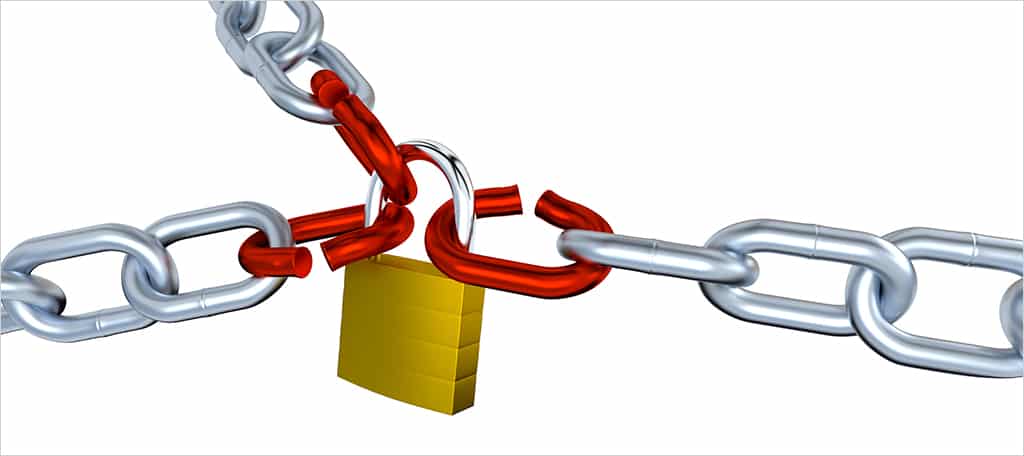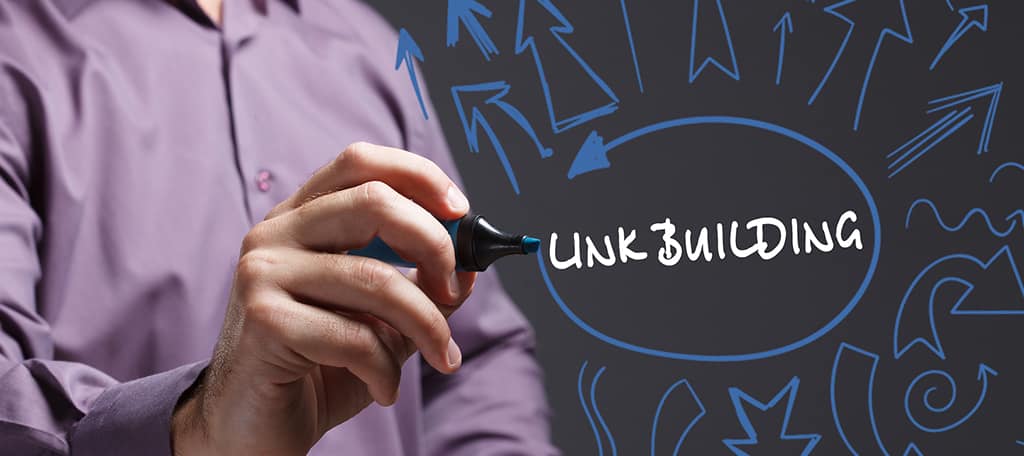
Links to your content are an important part of driving traffic. Whether it’s a link from a Google search or from a page someone is reading, the right links can vastly improve productivity of your website.
Internal linking is part of that process.
An internal link is one that connects one piece of content to another on the same website. For example, you could have a post about spinach and link to a page your created loaded with spinach recipes. This not only helps visitors find more content, but it also improves search engine optimization.
Because of this, your site ranks higher in search results.
Many experts attribute internal links to a kind of “link juice.” Essentially, it’s the belief that linking out to other pieces of content gives those materials power in terms of relevancy.
Think of it kind of like voting for a particular post or page. It tells search engines that certain pieces of content are more important to you.
Today, I’m going to go over some things to help you build internal links the right way. These methods are from top experts in the field and based on my own personal experiences.
Add at Least Three links to Old Content in Each Article

Linking to old content is a way to show search engines those articles are important to you. It also helps visitors find content they might not know exist.
When it comes to search results, relevance is vital. Linking to older articles that support your current topic demonstrates to engines and visitors the content is still relevant.
This increases the likelihood it will perform better in search results.
As time goes on and fewer links are going to and from a particular article, it begins to lose position in search engines. It’s all about keeping the content fresh and up to date.
If you can’t find a viable link to support your current piece, don’t try to force it. It may look irrelevant to engines like Google which can hurt the search rankings for that particular article.
It’s better to leave it be for now and update it later if you create something relevant in the future.
Update Your Old Content

Depending on the topic and whether you’ve created evergreen content, old posts could still amass great interest.
But what if you have opportunities in those old posts to add links to new content? Then you should, by all means, go in and edit those old posts and update the links.
Perhaps the hardest part of this process is keeping in mind past content and its relation to new articles. It may not be a bad idea to re-read a few of these simply to make sure you don’t miss an opportunity to further promote new content.
You could always do a site search in Google of particular keywords or phrases to see if you have any relevant connections you haven’t thought of before. This is done by typing, “site:yourwebsite.com” followed by a keyword or phase into Google.
For instance, “site:yourwebsite.com seo tactics” will return a list of webpages you have with the phrase “SEO tactics” in text and links.
Another way you could update your old articles with new links is to add a new paragraph to the old content with proper anchor texts.
Not only does this provide an internal link, but it also improves the old article with additional information.
Keep Links as “Follows”

When you add links, you can create “follow” and “nofollow” methods. You want all of your links to be set to “follow.” This is determined by default and doesn’t require any additional programming.
It’s when you add the rel=”nofollow” to a link that may cause issues. In some instances, I’ve even seen the nofollow link hurt webpage search rank when linking to external sources.
Why is this important? Because search engines won’t follow the link to its intended target.
This means the content on the other end of that link will not be crawled by search engines like Google. Although they will still work fine for your visitors, it makes the content appear less important in search results.
In reality, you want to use the nofollow sparingly. Only use it when you absolutely do not want search engines to crawl the webpage. This shouldn’t be a common occurrence.
An example of when you would use nofollow may be if you want to hide the login screen for your website.
Link to Your Most Important Content

Isn’t all content on the website important? To some degree, absolutely. However, there are pages you may want to appear more pronounced in search engines.
For example, linking to the page or post that has the highest conversion rate increases its importance in search results.
It’s important to link to all of your internal articles. But let’s face it; there are some pieces you feel are more valuable.
If you sell a service as your primary method of online income, you want that content to appear as often as possible. This is why some web developers will link well-developed landing pages.
Think of it as internal promotion for your guests and search engines. It’s like saying, “What you really want to read is over here.” As long as the page supports the current article, it could do wonders for search ranking.
However, you want to be careful when adding too many links. Engines like Google will penalize sites that appear “spammy.”
Don’t Get Spammy with the Links

Part of a good internal linking strategy is knowing how many and what kind of links to add. After all, you don’t want a webpage that is covered 90% of the way with these elements.
On the other hand, you do want to show engines and visitors other relevant content on your site.
Adding too many links to a single post takes away from each one’s importance. Imagine your link strategy for a single webpage as a piece of pie. If you cut that pie into 20 segments, one for each link, the slices are much smaller and less attractive.
Cut that pie into three segments and the pieces are much greater.
You also don’t want one link covering two or more sentences. It looks bad to the visitor and doesn’t really help that much in terms of SEO. Short three to five-word phrases appear to work best as long as the anchor text is relevant to the topic.
The Penguin algorithm update for Google in 2016 further fine-tuned the process of killing spammy sites. In fact, you may have seen a difference shortly after the roll out of the Penguin update.
As long as you’re not spammy with links and strive for quality content, you should have no negative consequences.
Use Good Anchor Text

Back in the day, many web developers would create links such as, “Click Here.” That doesn’t work very well today. While the human element may still follow the directions of the link itself, it appears as bad practice to search engines.
For one thing, the text “click here” isn’t really relevant to the topic or information you’re sharing.
Take these two sentences for example. Let’s say that both are linking to a page describing how to build a blog that generates visitor traffic.
1. Click here to read about how to build a blog and start generating traffic.
2. You can build a blog today and start generating traffic.
See the difference between the two? Sentence two is the preferred method for two reasons: it appears more natural to readers and it tells the search engine the content it is linking to.
You also want to be as descriptive as possible without becoming spammy, especially if you’re citing facts. Here are two more examples of what I mean:
According to an SEO study …
According to our study on SEO strategies …
Not only does it look more professional from the reader’s standpoint, it looks better to search engines for authority and relevance.
Keeping Links Relevant

An important thing to remember when building links is to keep them relevant. I cannot stress the importance of this fact enough. This is true whether it’s internal linking structure or citing another website.
Since the Google Penguin update started rolling out in 2012, relevancy to content has been a priority. This is because the search engine giant is focusing more on bringing quality articles to visitors.
This also means those who created spam links are sinking deep into the recesses of search results.
For example, you don’t want to link to a page with a topic of barbecue recipes if you’re currently writing about caring for an infant. The content you’re linking to has to be connected to what you’re writing about.
Think of it like an extension of your article. Ask yourself, “Will the link make sense to a reader who wants to know more about the topic?”
Look at it like writing chapters in a book. You want each chapter to be an extension of the one before it. Otherwise, it becomes confusing to read. The same can be said about internal linking strategies. In this case, it becomes confusing to human and bot readers alike which will affect SEO.
Create Content-to-Content Links

You want your links to support the current article. This means you want articles that are rich in content to be linked to one another. It creates a chain of information that users and search engines love to go through.
Adding a link to something like a contact form essentially breaks the link and reduces exploration.
The more often visitors are able to explore your content, the more likely they’ll stay on the site. This increases the chance of conversion as people remain on the domain to continue learning and reading.
In other words, you want a continuous chain of content from internal linking.
Pages such as About and Contact are not considered rich in content. Besides, they technically have links available on nearly every part of your site if they’re added to the navigation menu.
Keep an Eye Out for Duplicate Links

Adding more than one link to a specific page of content from a single article is not going to help boost SEO or “link juice.” At least, there is no evidence to support the claim.
In fact, some experts believe using multiple links with varying anchor texts can cause issues for SEO.
From the user perspective, it may also be annoying when someone thinks they are visiting a second page only to see it’s the same link as one they clicked before.
It’s an unnecessary redundancy that plays a part in how the visitor views the website as a whole. You want to engage the visitor, not annoy or frustrate.
Unfortunately, it may be necessary to have some duplicate links in your content.
For instance, the homepage link in the navigation bar and your site’s logo may both point to the homepage. Things like this are clearly the exception as you want these elements for the user experience.
Keep the Content Hierarchy Easy to Manage

In essence, you want every article of content on your website accessible from the home page in no more than three clicks. Any more than that, and you can easily lose readers.
People want content now, and the speed in which they access information on your site is vital to its success.
One of the worst things to experience as a visitor is the feeling of going around in circles when trying access certain information. It gets frustrating to the point where visitors will abandon the site for one that is easier to manage.
If your site is somewhat complicated or has extensive categories and material, using breadcrumbs may be helpful when it comes to internal linking. This gives the user a base which to access particular sections of content without feeling overwhelmed.
Keep in mind the structure of your categories and taxonomies, though. If someone visits a “computer” section, it’s likely he or she isn’t looking for microwaves.
Having a solid base for categories is very important for internal linking, and a weak structure often leads to problems with human and search engine visitors alike.
Internal Linking Boosts SEO

I’ve seen internal linking work wonders for even the smallest of websites. In many cases, the site as a whole improved visibility scores as well as click-through rates.
Just make sure you’re linking to content that supports your current piece. Otherwise, it could appear spammy and the article may be penalized by search engines.
